Add common milkweed to your garden to make colorful insects happy
Milkweed plants can serve as host to many kinds of interesting insects.

Common milkweed (Asclepias syriaca, Photos 1-2) is a native plant with a robust appearance and a downy feel. Flower clusters are formed mostly where the leaves join the stems and are shades of dusty rose, lavender and occasionally a dull brownish purple. They have a delightful, flowery fragrance. The gray-green seed pods are pointed and warty. Plants can grow from 3 feet to more than 6 feet tall during the growing season. The thick, white, Latex-like sap in the milkweed plant contains compounds called cardiac glycosides, which are toxic to many animals. Insects that have adapted to feed on milkweed are able to get around these chemical defenses. Many of them take the extra step of incorporating the milkweeds toxins into their own bodies, making them distasteful to predators. These milkweed specialists warn would-be attackers with bright colors on their bodies, which puts them among some of the most colorful insects in Michigan yards and gardens.
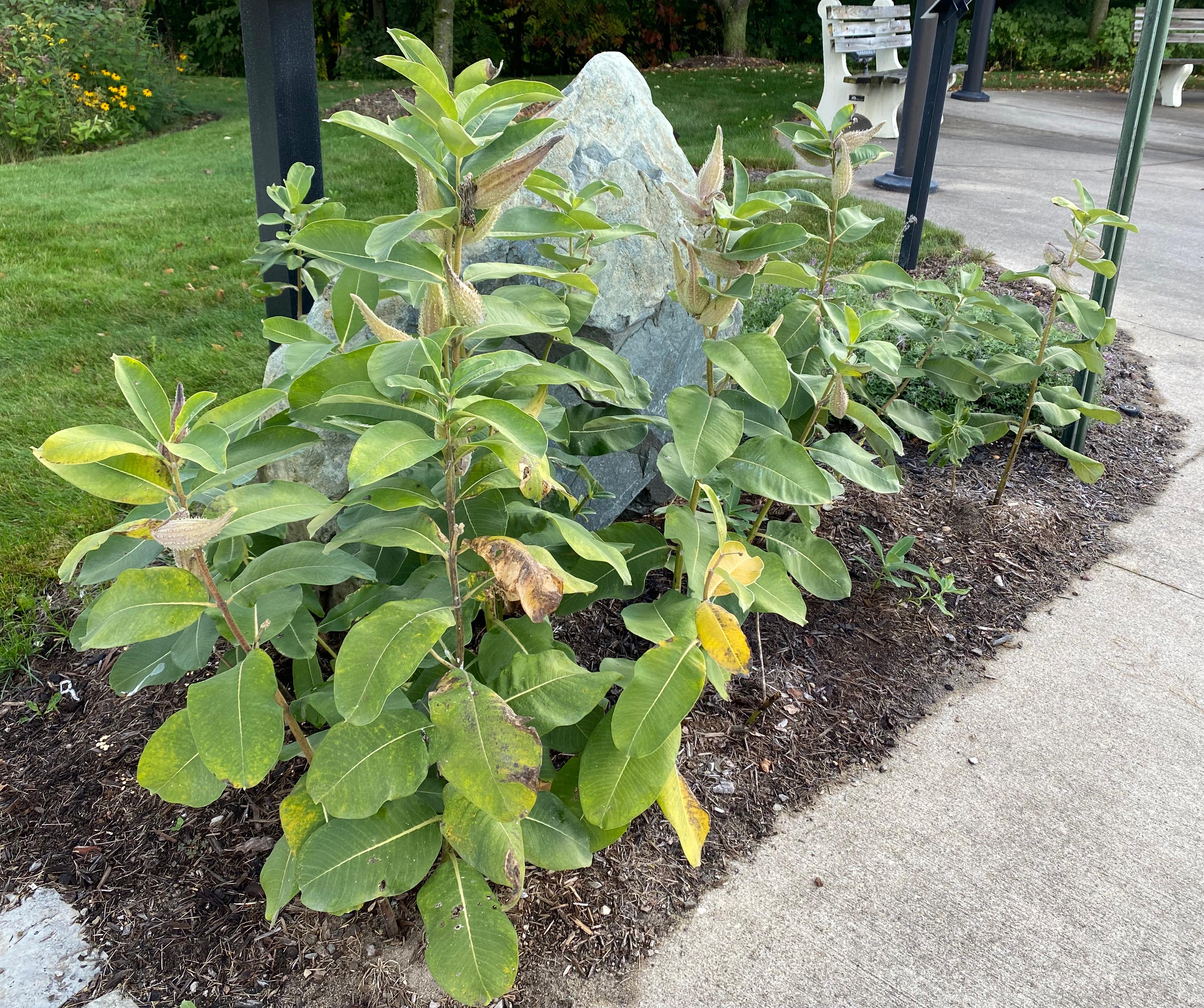
Despite the difficulties associated with eating common milkweed, hundreds of Michigan insects consume the leaves, roots or flowers. Innumerable insects also visit the flowers for the abundant nectar they provide. This summer and fall brought some of these interesting insects to the common milkweeds in my own garden. None of these tiny “livestock” kill the plants. A bit of leaf munching and sap sucking is all that is expected.
Monarch butterflies (Danaus Plexippus, Photo 3) are the best-known insect that feeds on common milkweed. The larvae or juveniles are yellow and white with black stripes. They can be found feeding on the leaves and flowers of milkweed plants. The adult monarch butterflies are a very recognizable orange and black, and they can be found visiting milkweed and other flowering plants to drink nectar from the flowers. The Michigan State University Extension Smart Gardening tipsheet, “Smart Gardening to Support Monarchs”, includes some excellent information about monarch butterflies for Michigan residents.
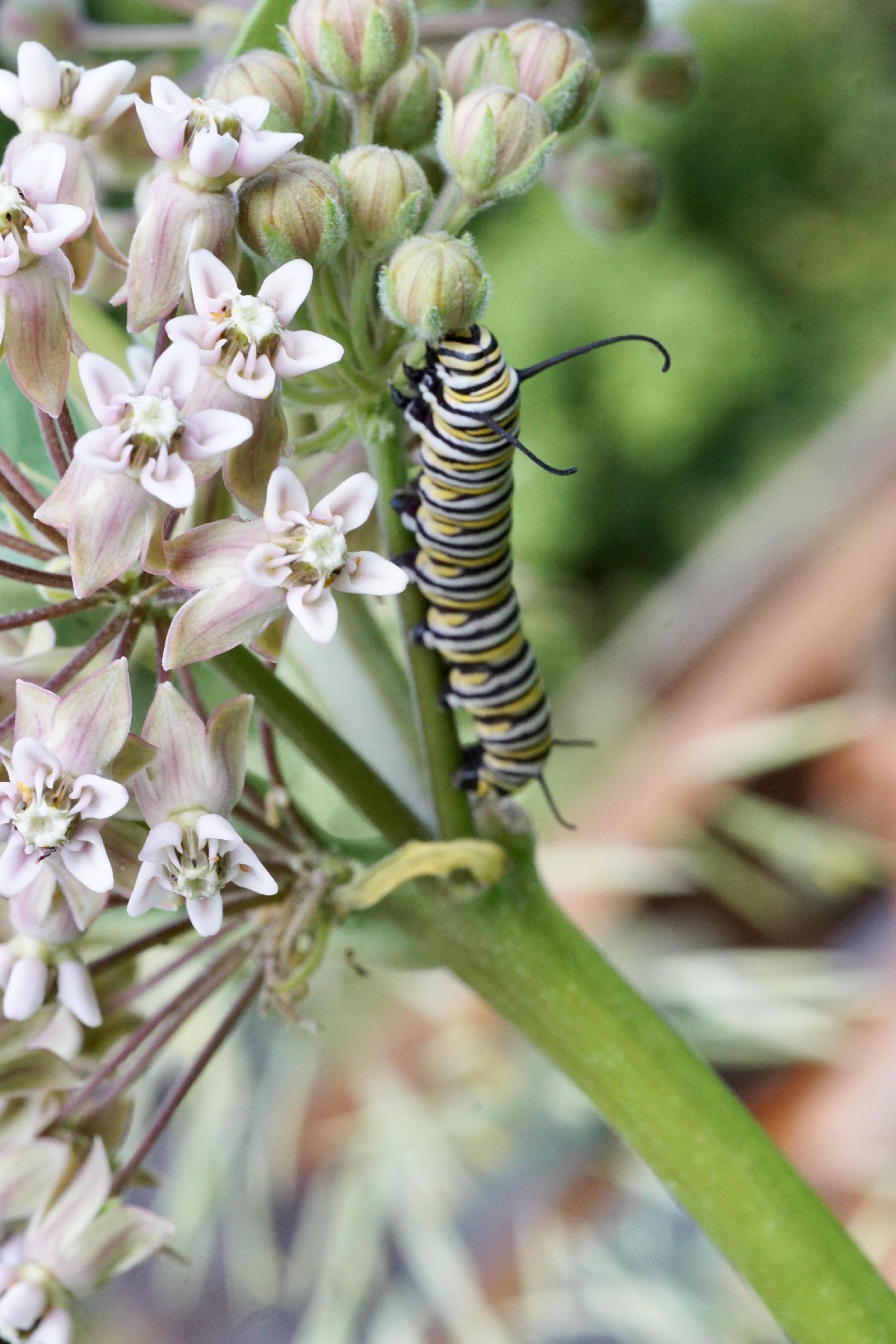
Milkweed tussock moth (Euchaetes egle, Photo 4) larvae feed during mid-summer and start as small, white, hairy larvae and finish their larva lives as white, black and orange tufted fuzzy-wuzzies. See the article, “Milkweed tussock moth larvae feed on common milkweed,” for more information on this insect.
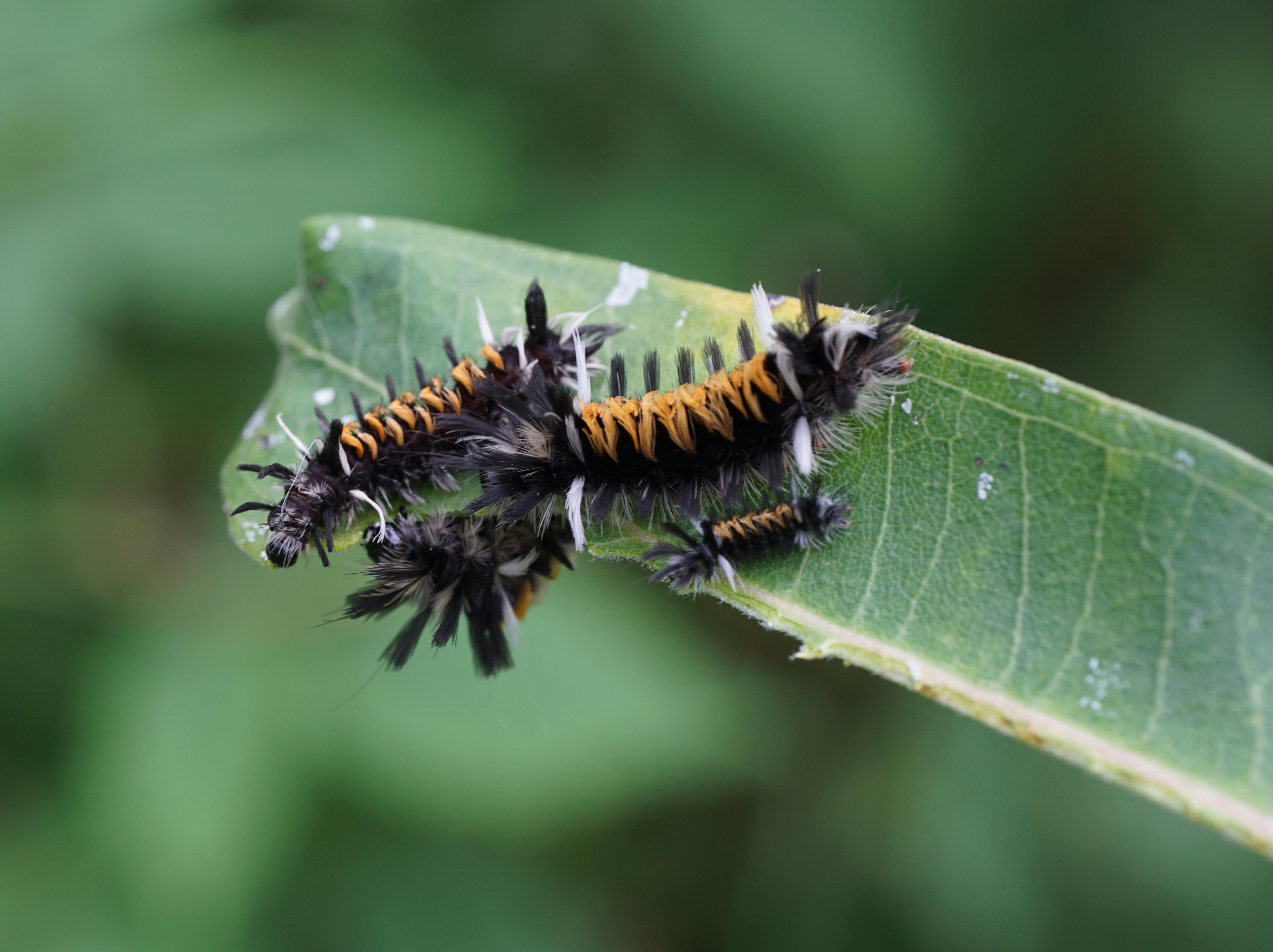
Milkweed leaf beetle (Labidomera clivicollis, Photo 5) prefers to feed on swamp milkweed (Asclepias incarnata), but it can also be found on common milkweed and other related plants. These red and black leaf beetles (family Chrysomelidae) have rounded bodies and somewhat resemble a large lady beetle (family Coccinellidae). The adults and larvae both feed on the leaves of milkweed.
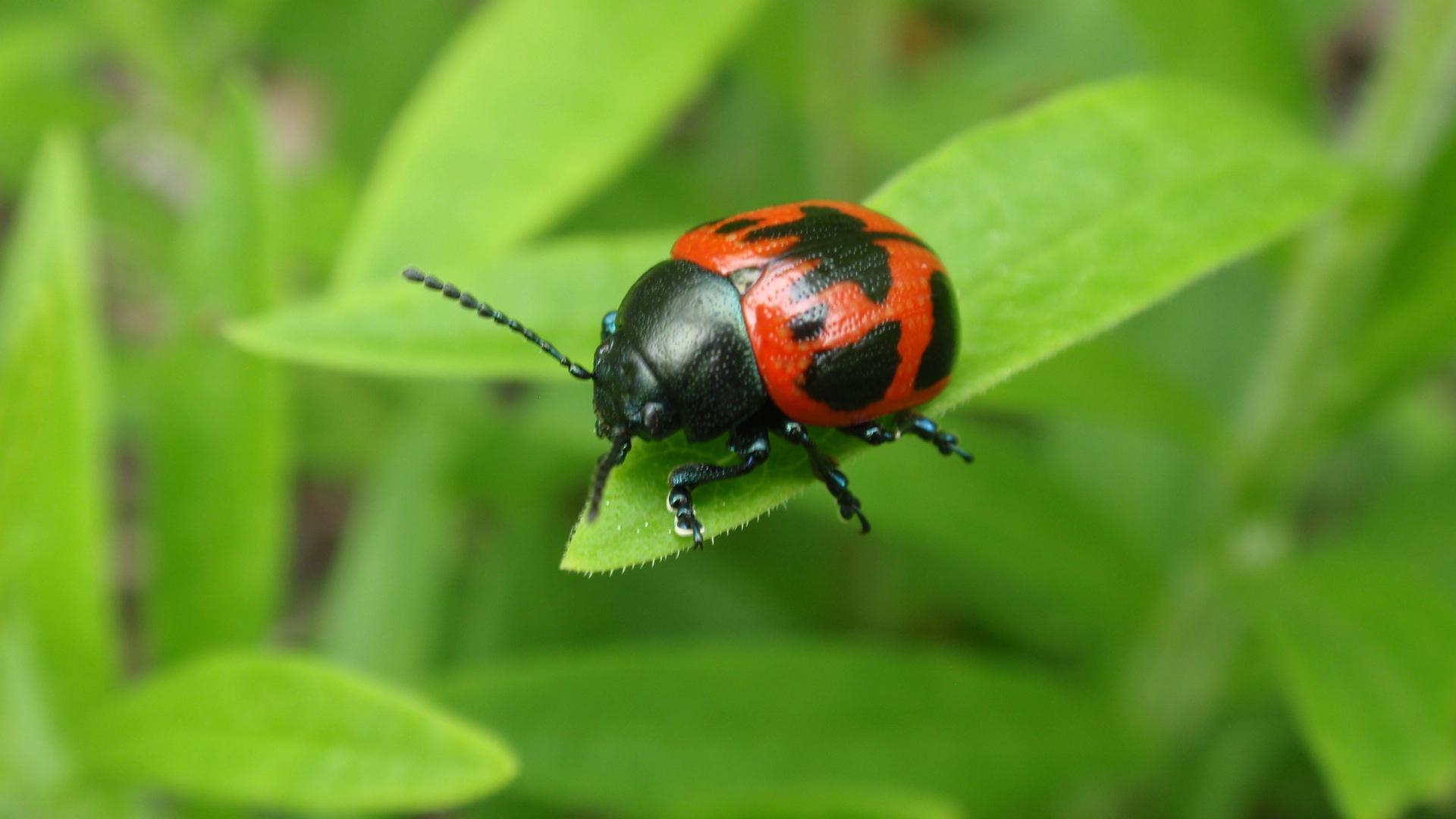
Red milkweed beetles (Tetraopes tetrophthalmus, Photo 6) are reddish orange with black spots and can be found wandering on leaves in mid-summer. The immature stage of these long-horned beetles (family Cerambycidae) live as borers in the roots of milkweed plants.
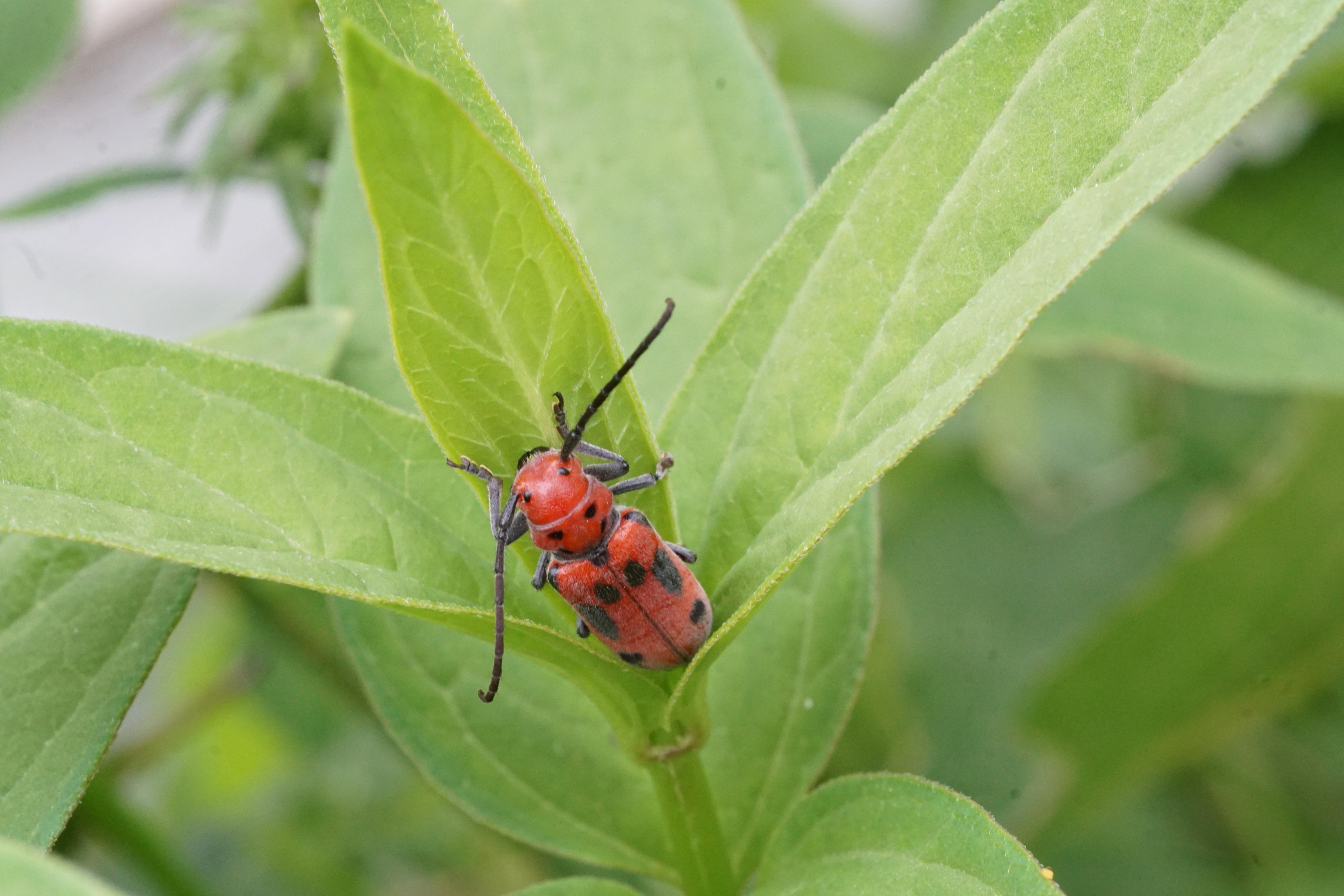
Large milkweed bugs (Oncopeltus fasciatus, Photo 7) are true bugs (Order Hemiptera) in the family Lygaeidae. You will find them huddling on seed pods in late summer and fall as the milkweed seedpods near maturity. They insert their long proboscis into pods to feed on the developing seeds. Adults and several growth stages of juveniles can be found hanging out together. They are all orange with various amounts of black, depending on their age.
A very similar insect called the small eastern milkweed bug (Lygaeus kalmii, Photo 8) is also commonly found in Michigan and might be confused with the large milkweed bug or the boxelder bug (Boisea trivittata). The boxelder bug (Photo 9) is not a milkweed specialist and you are not likely to find it feeding on milkweed in Michigan.
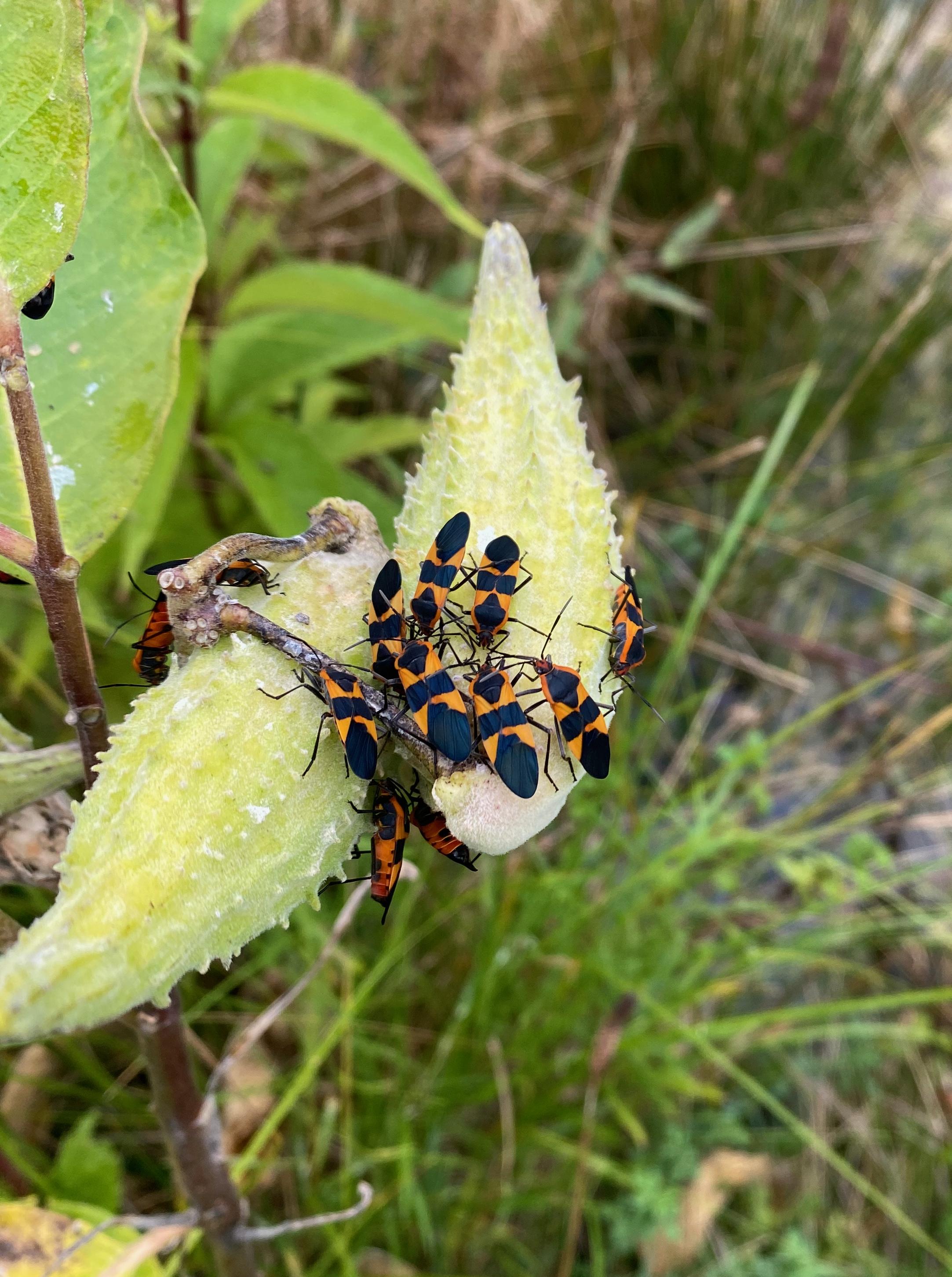
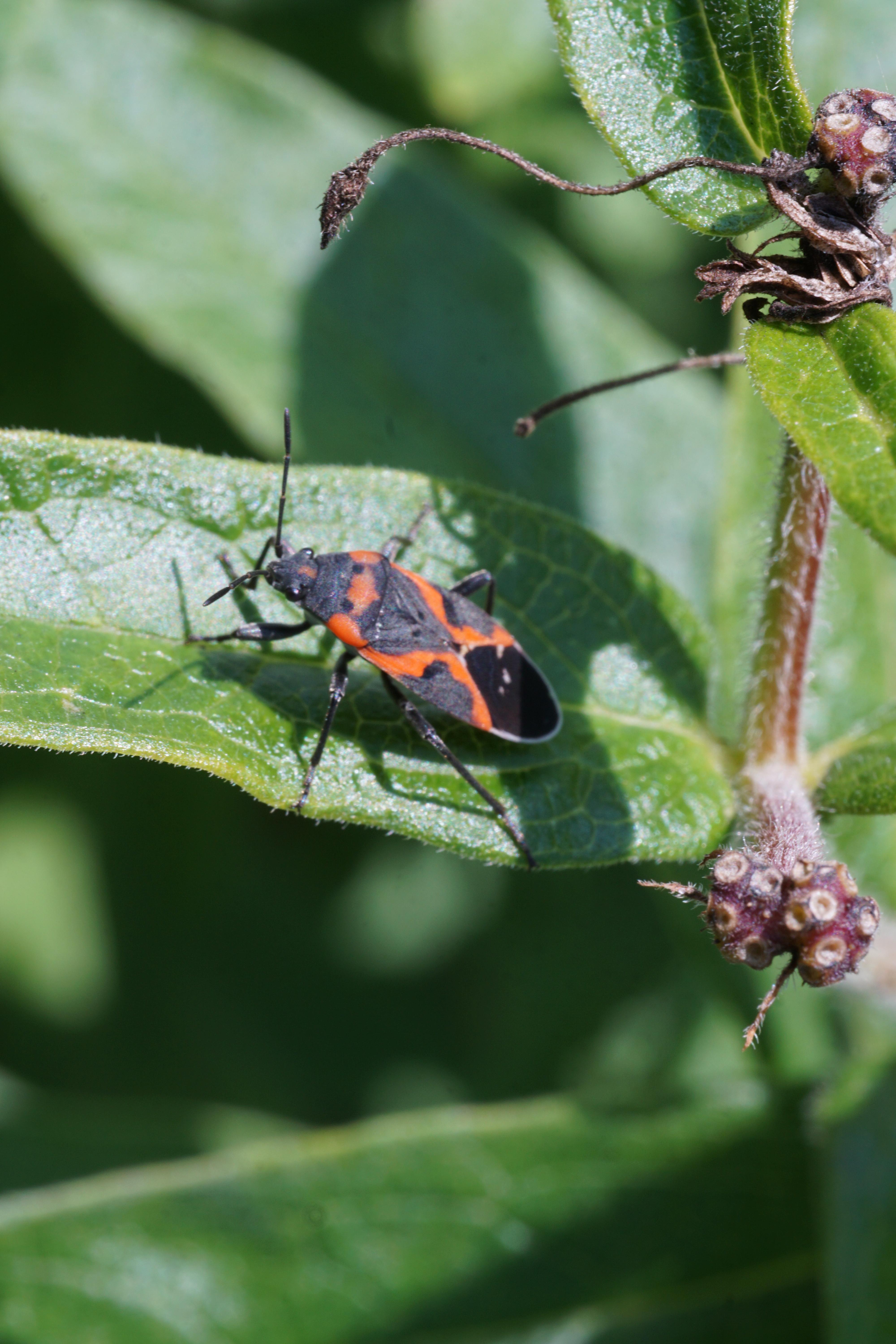

Planting milkweed from seeds
Common milkweed (Asclepias syriaca) can be regrown from seeds collected from mature pods. It’s important to remember, however, that unripe seeds do not germinate. Only a few annoying weeds will grow from unripe seeds. Wait until the milkweed pod has changed from green to tan on the outside, the interior looks silvery, and a split has developed for the seeds to be released. Milkweed seeds are attached to a white fluffy material that allows them to be carried on the wind (Photo 10). Collect the pods before they have completely popped and the fluffy fliers are in the wind. To remove seeds, you can carefully open the pod to collect seeds and fluff. Put them into a paper bag or paper envelope so there is no chance of trapping any moisture. Dampness is the enemy of seeds at this point; you’ll want to keep them as dry as possible until planting time.
Later, separate the fluff from the seeds. (When the seeds are placed in the garden, they are supposed to stay where you put them.) Prepare an area for the milkweed seeds that has bare, raked soil. Carefully drop the seeds and smooth a thin layer of soil over the seeds. Use a bit of light much, e.g., straw or dried grass clippings over the seeds and soil. The seeds need the winter for cold stratification, which involves being damp, freezing and thawing. Mark the area well, so you do not inadvertently pull up the milkweed. If unsure what the milkweed seedlings will look like, wait until they are big enough to identify.
Keep in mind that all seeds will not grow, so always seed in more than you want. Seeds may not emerge before July, so be prepared to wait. The plants will not bloom the first year. The second year and after, there should be milkweed blooms and tiny insect livestock for fun and enjoyment.
For more information on growing milkweeds, see "Help monarchs and other pollinators by collecting milkweed seeds this fall" from Michigan State University Extension.

This work is supported by the Crop Protection and Pest Management Program [grant no 2024-70006-43569] from the USDA National Institute of Food and Agriculture. Any opinions, findings, conclusions, or recommendations expressed in this publication are those of the author(s) and do not necessarily reflect the view of the U.S. Department of Agriculture.



 Print
Print Email
Email